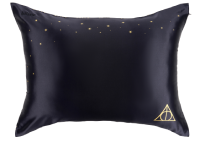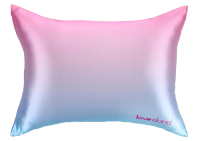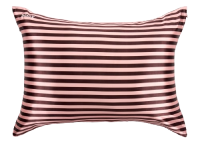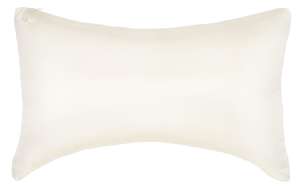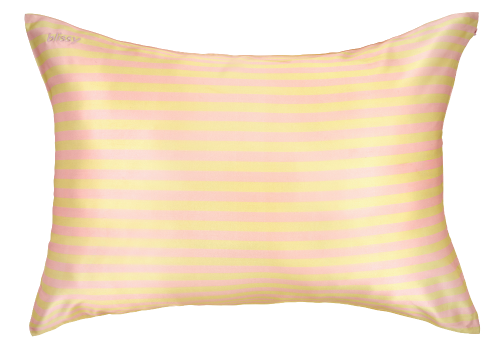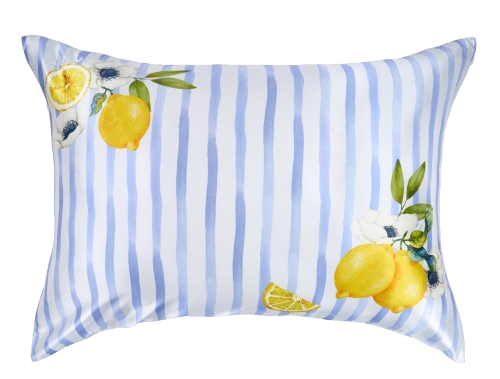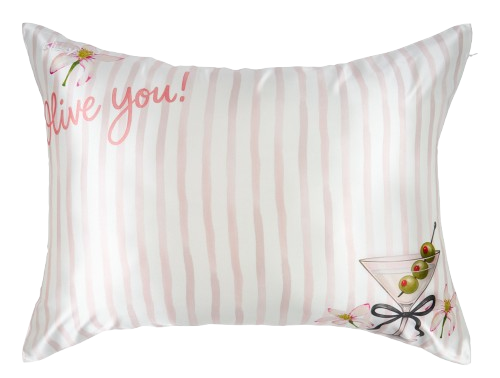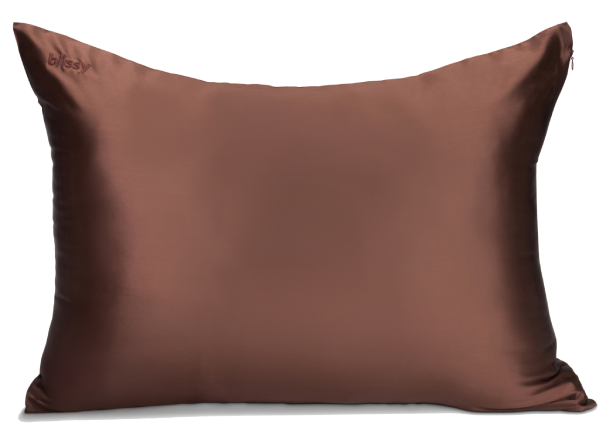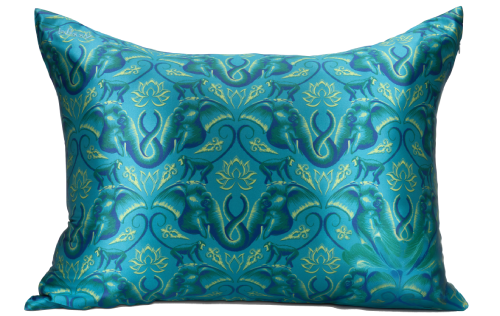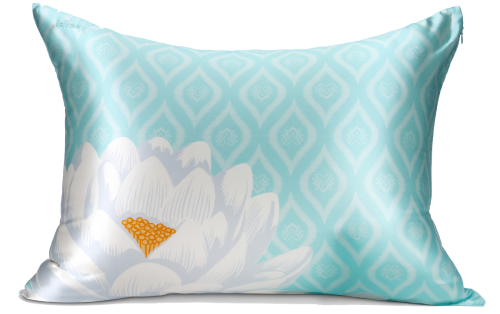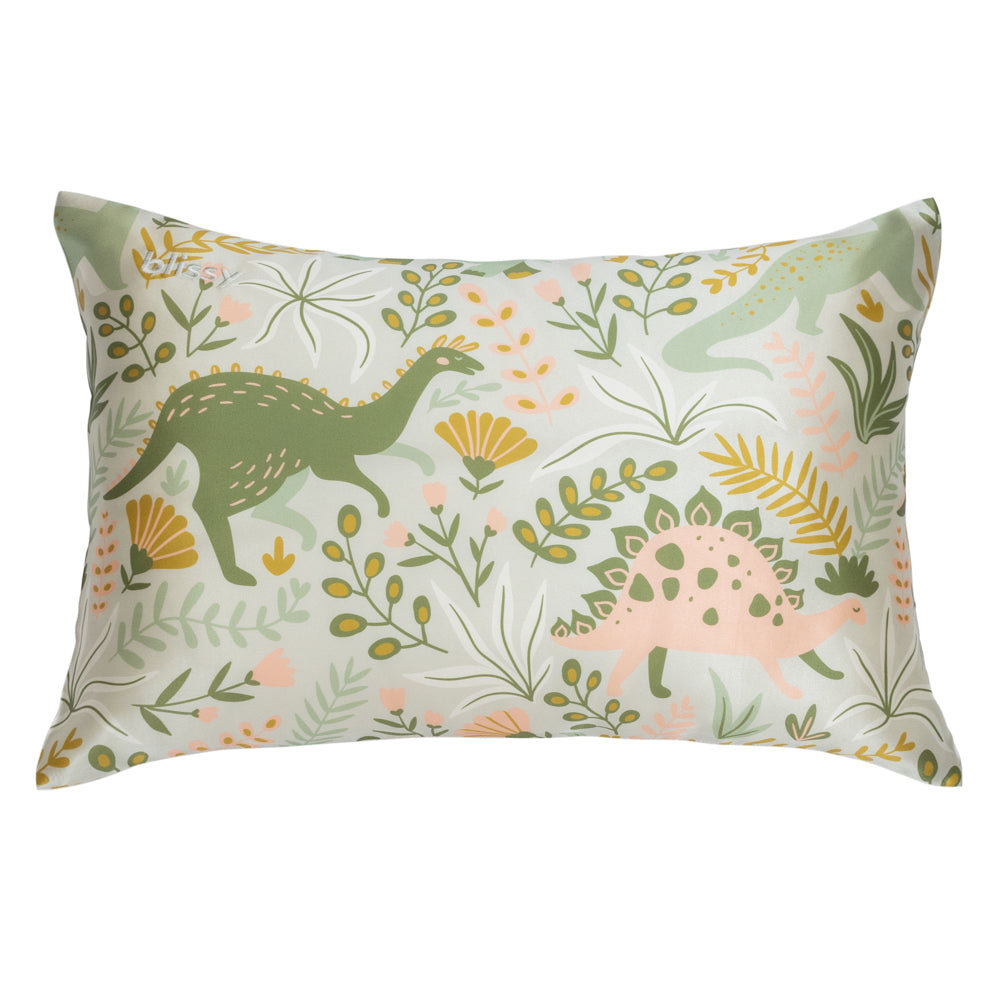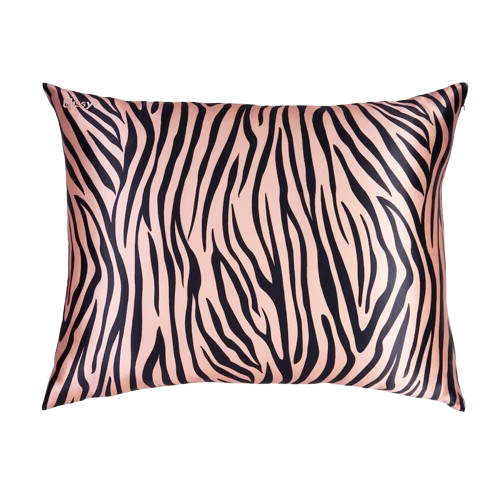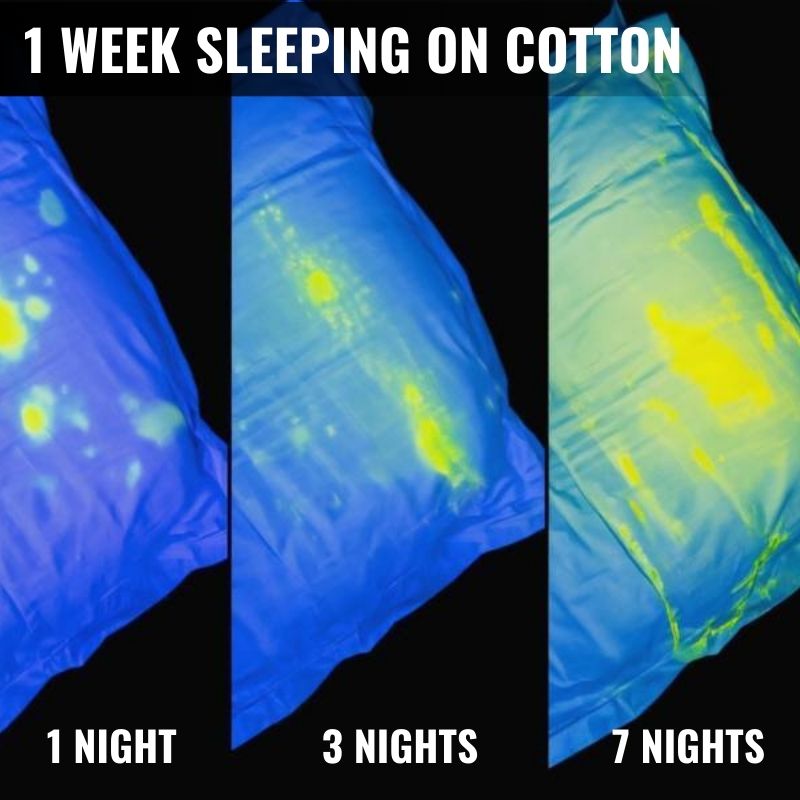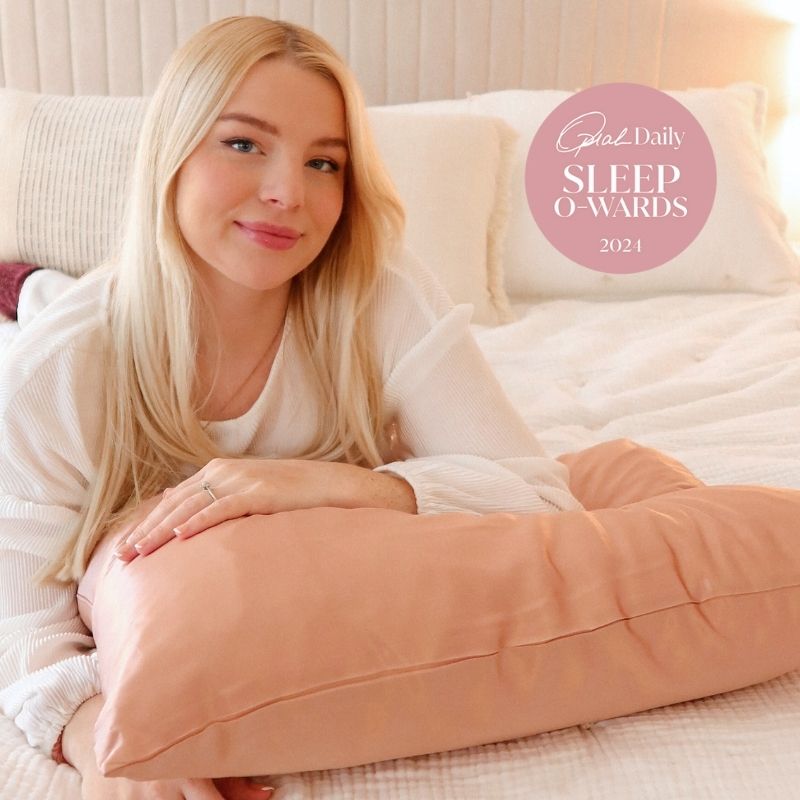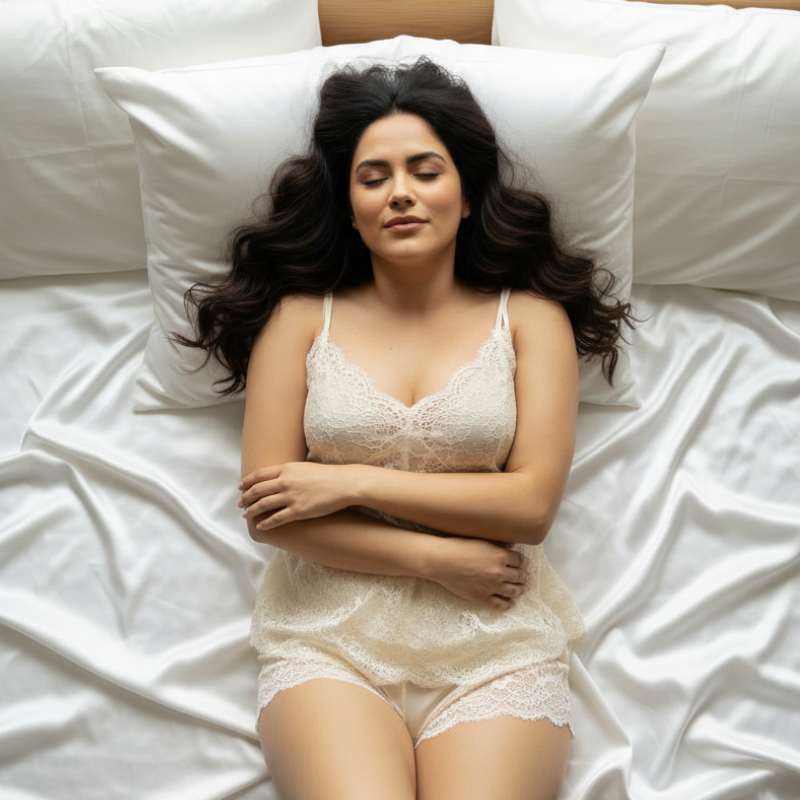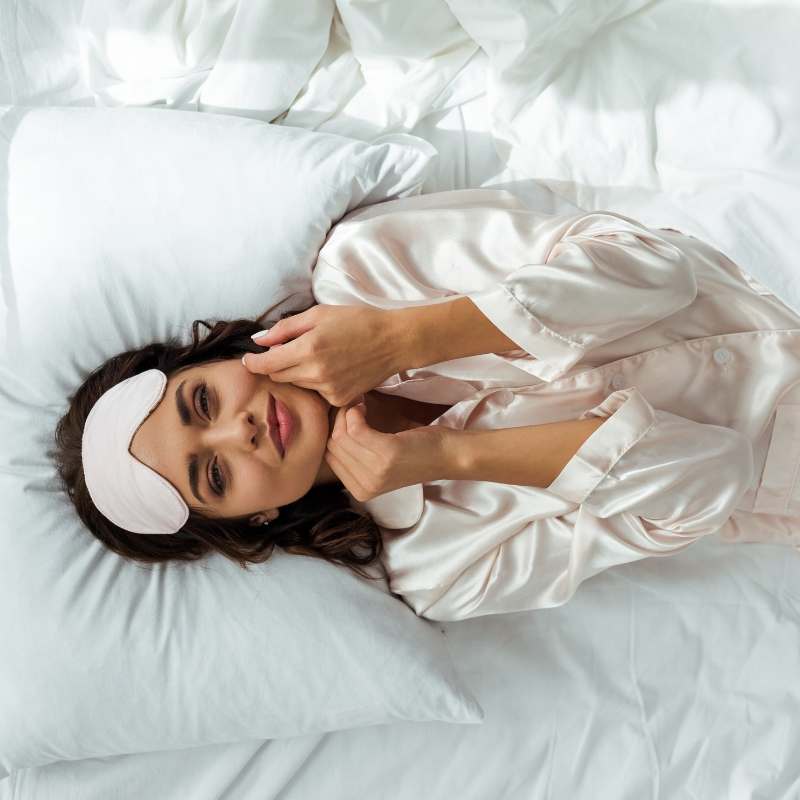Key Takeaways:
-
Silk pillowcases reduce friction, helping prevent wrinkles, frizz, and breakage.
-
Cotton absorbs moisture, stripping away your skin’s hydration and hair’s natural oils.
-
Silk is hypoallergenic, temperature-regulating, and gentle on sensitive skin and curls.
-
Blissy Silk Pillowcases deliver proven results, expert approval, and over 230k reviews.
Introduction: Why Your Pillowcase Material Actually Matters
Here's something that might blow your mind: You spend about a third of your life with your face pressed against your pillowcase. And if you're using cotton? You might be unknowingly sabotaging all the time and effort you put into your skincare and haircare routines while you sleep. (Talk about working against yourself!)
Cotton pillowcases are basically moisture thieves that create friction and can harbor dust mites—and according to dermatologists, all of this can lead to dry skin, frizzy hair, sleep lines, and even breakouts.
But here's where it gets interesting: silk pillowcases offer a smooth, breathable surface that actually works with your skin and hair, not against them. Research backs this up, and hair and skin experts are practically obsessed with recommending the switch.
Ready for the breakdown? In this guide, we'll dive deep into the real differences between silk vs cotton pillowcases, backed by solid science, expert advice, and real stories from users who've made the switch.
Whether you're battling wrinkles, acne, hair breakage, or just want to transform your sleep into literal beauty sleep, understanding these fabrics could completely change the way you rest for the better.
Silk vs Cotton Pillowcase: Material Breakdown

What Makes Silk Different?
Silk is a natural protein fiber produced by silkworms, prized for centuries for its smooth texture and luxurious feel. Unlike cotton, silk fibers are incredibly smooth at the microscopic level, which means less friction against your skin and hair while you sleep.
Pure silk pillowcases—especially those made from mulberry silk—are naturally:
-
Hypoallergenic: Resistant to dust mites, mold, and allergens
-
Moisture-wicking: Keeps your skin hydrated by retaining natural oils
-
Temperature-regulating: Stays cool in summer, warm in winter
-
Gentle: Reduces tugging and pulling on delicate facial skin and hair
Blissy Silk Pillowcases are made from 100% Grade 6A, 22-momme mulberry silk—the highest quality silk available. They're also OEKO-TEX certified, meaning they're free from harmful chemicals and safe for even the most sensitive skin.
As featured in Good Housekeeping, "Both hair and skin experts recommend it, and several of Good Housekeeping's editors now swear by it."
What Makes Cotton Less Ideal?
Cotton is absorbent by nature—which is great for towels, but not so great for your face and hair. Traditional cotton pillowcases: Cotton's abrasive nature can rough up hair's cuticle, leading to frizz, breakage, split ends, and tangles.
-
Absorb moisture from your skin, stripping away hydration and skincare products
-
Create friction, leading to sleep lines, wrinkles, and hair breakage
-
Trap heat, which can cause sweating and discomfort
-
Harbor dust mites and bacteria, which can worsen acne and allergies
-
Absorb oils from the hair and skin, resulting in breakouts and dehydrated skin
Unlike cotton, silk is less absorbent, meaning it doesn't pull moisture away from your skin or hair. Instead, it helps retain your natural oils and keeps your skincare products where they belong—on your face.
Silk is less absorbent than cotton, meaning hair's natural oils won't be as easily absorbed by the pillowcase.
Hair Benefits: Why Silk Is Better for Curly, Textured, and Frizz-Prone Hair

How Silk Reduces Frizz and Breakage Overnight
One of the biggest differences between silk vs cotton pillowcases is friction. Cotton's rough surface creates tension as you toss and turn, causing:
-
Hair breakage and split ends
-
Frizzy hair and flyaways
-
Tangled, matted curls
-
Loss of hairstyle (especially for blowouts or protective styles)
Silk pillowcases reduce friction by up to 43% compared to cotton, allowing your hair to glide smoothly across the surface. This is especially beneficial for people with curly or textured hair, who are more prone to breakage from rough fabrics.
Silk creates minimal friction against the hair and skin, reducing the risk of breakage and sleep wrinkles.
"Testers loved their appearance and feel."
— Good Housekeeping’s 2024 Best Bedding Awards
Blissy: Joint Winner & Best In Lab
Real Results: What Users Say About Silk for Hair
"I noticed that my hair was as smooth as if I had blow-dried it the night before," one PureWOW editor shared after switching to Blissy.
"After a few weeks of testing out my Blissy gear, I've noticed a big difference in my typically matted hair, as well as in my hair's frizz levels," reported Oprah Daily.
For those with curly or textured hair, silk is a game changer. It helps preserve curl patterns, reduces shrinkage, and minimizes the need for restyling in the morning.
Skin Benefits: How Silk Helps Prevent Wrinkles, Acne, and Dryness

Why Silk Is Better for Acne-Prone and Sensitive Skin
Cotton pillowcases can sabotage your skincare routine. Because cotton is so absorbent, it pulls moisture—and your expensive serums—right off your face while you sleep. This leaves your skin dry, irritated, and more prone to breakage.
Silk pillowcases, on the other hand, don't absorb skincare products. One PureWOW editor noted, "I skipped my heavy cream. I used just a few drops of my favorite hydrating serum, followed by a dollop of SPF...and I'm still hydrated."
Pure silk is also naturally hypoallergenic, which means it resists dust mites, mold, and bacteria—common triggers for acne and allergic reactions. Unlike cotton, which can trap dirt and oils, silk's smooth surface stays cleaner longer.
Dermatologists agree: "Blissy pillowcases are more than a luxurious bedding upgrade—they can also be a total game changer for your hair and skin, according to top dermatologists," as reported by SheKnows.
How Silk Reduces Sleep Lines and Wrinkles
Sleep lines aren't just annoying—they can become permanent wrinkles over time. The friction from cotton pillowcases causes your skin to crease and fold as you sleep, especially if you're a side sleeper.
Silk's smooth surface reduces this friction, allowing your skin to glide instead of crease. "I find settling to sleep more comfortable and my sleeps are more restful—plus, I don't wake up looking or feeling my age," shared a Prevention reader.
For people with sensitive skin, dry skin, or eczema, silk pillowcases offer a gentle surface that won't irritate or inflame. They're also ideal for anyone recovering from cosmetic procedures or dealing with rosacea.
Further Reading:
Sleep Quality: Why Breathability and Temperature Control Matter

Cotton Traps Heat—Silk Keeps You Cool
One of cotton's biggest drawbacks is its tendency to trap heat and moisture. If you wake up sweaty or find yourself flipping your pillow to the "cool side," your cotton pillowcase might be to blame. Cotton also tends to absorb moisture, creating a breeding ground for bacteria and dust mites.
Silk fibers are naturally breathable and temperature-regulating, which means they help keep you cool in summer and warm in winter. This is especially important for hot sleepers, people experiencing night sweats, or anyone going through menopause.
"When I wake up, it's genuinely easier to get out of bed because my sleep was a higher quality," one PureWOW tester reported after switching to silk.
The Connection Between Skin Health and Sleep Quality
Good sleep quality and skin health are deeply connected. When you sleep on a surface that irritates your skin, traps heat, or causes discomfort, it disrupts your rest—and poor sleep shows up on your face the next morning.
Blissy Silk Pillowcases promote better sleep quality by creating a comfortable, breathable environment that supports skin and hair health overnight. Over time, this can lead to fewer breakouts, less inflammation, and a more refreshed appearance.
Silk vs Cotton: Head-to-Head Comparison
| Feature | Silk Pillowcases | Cotton Pillowcases |
|---|---|---|
| Friction | Minimal—reduces breakage and frizz | High—causes hair damage and sleep lines |
| Moisture Retention | Retains skin's natural oils | Absorbs moisture from skin and hair |
| Hypoallergenic | Yes—resists dust mites and bacteria | No—can harbor allergens |
| Temperature Control | Breathable and cooling | Can trap heat and moisture |
| Hair Benefits | Reduces frizz, split ends, and breakage | Causes tangling and damage |
| Skin Benefits | Prevents wrinkles and keeps skin hydrated | Can worsen dryness and acne |
| Best For | Curly/textured hair, sensitive skin, hot sleepers | Budget-conscious, low-maintenance |

Why Blissy Is the Best Silk Pillowcase Brand
Clinically Tested, Dermatologist-Recommended
Not all silk pillowcases are created equal. Blissy uses 100% Grade 6A, 22-momme mulberry silk, the highest quality available, and is OEKO-TEX certified to be free from harmful chemicals.
"Blissy seemed like the obvious answer to my constantly tangled hair and my dry skin," shared Oprah Daily.
A 2025 clinical study by Kosmoscience found that participants sleeping on Blissy Silk Pillowcases experienced:
-
Reduced frizz and hair damage
-
Protection for curly and textured hair
-
Smoother, more hydrated skin after 30 days
Trusted by Over 2 Million Customers
Blissy has over 230,000 five-star reviews, making it the most-reviewed silk pillowcase on the market. Customers love:
-
How it preserves hairstyles (blowouts, curls, protective styles)
-
The cooling effect for hot sleepers
-
Visible improvements in skin texture and breakouts
-
Easy care: Machine washable on a gentle cycle
"Blissy makes the softest pillowcases in more than 50 colors and styles. At under $100, it's a great way to treat just about anyone to something they might not buy for themselves," as featured in Forbes.

Featured in Major Publications
Blissy has been recognized by:
-
Good Housekeeping (Best Bedding 2023, 2021; Best Tested Products 2021)
-
NewBeauty (Best Pillowcase Award 2024, 2023)
-
Oprah Daily (Sleep O-Awards 2024)
-
Vogue, Allure, Marie Claire, Glamour, and more
How to Care for Your Silk Pillowcase
Washing and Maintenance
Silk pillowcases require gentle care to maintain their quality. Here's how to keep yours in perfect condition:
-
Hand washing is ideal, but machine washing on a gentle cycle works too
-
Use lukewarm water and a mild, pH-neutral detergent
-
Avoid bleach, fabric softeners, and direct sunlight
-
Air dry or tumble dry on low heat
-
Iron on a low setting if needed, following care instructions
Blissy Silk Pillowcases are designed to be durable and easy to care for, lasting for years with proper maintenance.
Make the Switch to Silk Tonight
The choice between silk vs cotton pillowcases is clear. While cotton might be cheaper upfront, it can actually damage your hair and skin over time—costing you more in skincare products, salon visits, and sleepless nights.
Blissy Silk Pillowcases offer a better solution: clinically proven benefits, dermatologist recommendations, and over 230,000 five-star reviews from customers who've seen real results.
Whether you're dealing with wrinkles, acne, hair breakage, or just want a good night's sleep, silk pillowcases—especially from Blissy—are an investment in your overall well-being.
Ready to experience the difference? Explore Blissy's collection of silk pillowcases in over 50 colors and styles, and start waking up with healthier hair and glowing skin.


